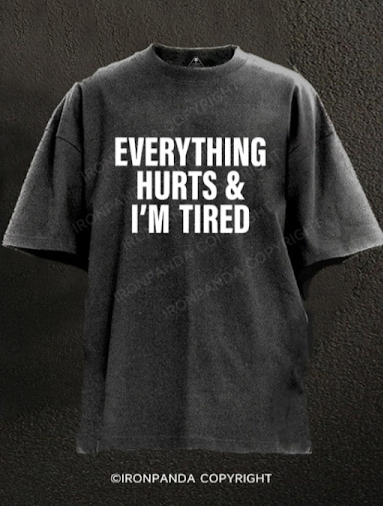Topic
Mastering Live Sound: A Guide to Selecting the Best PA Speakers

When it comes to hosting an event, the quality of audio can make or break the experience for attendees. Whether it’s an intimate gig, a corporate function, or a large outdoor festival, the essence of live sound hinges on the efficacy of your public address (PA) system. The cornerstone of any venerable PA system is a set of speakers that can reliably project crisp, clear audio to every corner of your venue. In this comprehensive guide, we will discuss the pivotal factors to consider when selecting the best PA speakers for your upcoming events.
Understanding PA Speaker Types
Before diving into the aspects of selection, it’s essential to understand the different types of PA speakers available. These primarily include passive speakers, which require an external amplifier, and powered speakers, known as active speakers, which have built-in amplification. The choice between these two will generally depend on the specific needs of an event in terms of portability, power requirements, and the existing sound equipment.
Assessing Your Event Requirements
The nature of your event is a significant determinant in choosing the correct PA speakers. An indoor conference demands a different audio setup compared to a rock concert. Consider the size of the venue, the expected number of attendees, and the genre of audio content. Indoor spaces may require speakers with a more controlled spread of sound, while outdoor events will likely need more powerful speakers with wider dispersion.
Audio Quality and Power
Audio quality should never be compromised. Clarity, volume, and fidelity remain paramount when choosing PA speakers. Assess the power rating of the speakers, measured in watts, to ensure they can handle the size and scale of your event. Also, consider the sensitivity of the speakers, which is a measure of how effectively they convert power into sound.
Portability and Setup
For events that involve different venues or require frequent setup and takedown, portability becomes a crucial factor. PA speakers that are compact and light, with ergonomic designs and easy-to-manage controls, will save time and reduce logistical stress. Some modern PA speakers also have built-in casters or offer compatible carrying cases.
Durability and Longevity
Events can sometimes be demanding on equipment, necessitating that the PA speakers you select are rugged and durable. Look for robust construction, quality materials, and design features that can withstand regular transport and varying climatic conditions. Long-term investment in hard-wearing speakers is more cost-effective than frequently replacing less durable models.
Connectivity and Integration
In an era where technology is continually evolving, your PA speakers should be capable of integrating seamlessly with existing sound systems and devices. Check for connectivity options such as multiple input types, Bluetooth capabilities, and expandability through additional speaker units or subwoofers. These features allow for flexibility across different types of events and venues.
Brand and Reliability
The brand of PA speakers can often be an indicator of reliability and performance. Renowned manufacturers usually have a proven track record of quality and customer satisfaction. Researching brand reputation and reading user reviews can provide insight into the experiences of other sound professionals with the PA speakers you’re considering.
Budget Considerations
While crucial, the budget should not compromise on the necessary features required for your event’s sound. It’s about finding a balance between cost and performance. Consider the long-term value, and do not shy away from investing a little more for speakers that will deliver consistently over time.
The Listening Test
Finally, whenever possible, conduct a listening test. No amount of specifications or features can substitute the experience of hearing the speakers firsthand. Test the speakers with various types of audio to gauge their performance across the spectrum—from spoken words at a conference to the dynamic range of a live concert.
Conclusion
Selecting the best PA speakers may seem daunting, but understanding your event needs, coupled with knowledge of speaker types and features, will pave the way for an informed choice. The sound quality, power, portability, durability, connectivity, and reliability are paramount features to evaluate. Remember, the right PA speakers won’t just carry sound; they will carry the memorable experiences of every event you host.
Therefore, devote the time to research thoroughly, test extensively, and choose wisely to ensure your events resonate with high-fidelity sound. Mastering live sound is an art, but with the right PA speakers, you’ll be well on your way to orchestrating unforgettable auditory experiences for all your attendees.
Topic
Navigating the Journey of Recovery: The Benefits of Sober Living in Austin, TX

Recovering from addiction is a life-changing journey that requires support, understanding, and a structured environment. One of the most effective ways to transition from treatment back to daily life is through sober living. Sober living homes provide a safe and nurturing space for individuals committed to sobriety while allowing them to regain independence.
The Importance of Sober Living
Sober living homes offer a crucial bridge between inpatient rehabilitation and independent living. They are designed to help individuals maintain their sobriety, develop essential life skills, and reintegrate into society. Residents in sober living environments benefit from a supportive community, accountability, and a structured routine, which are all vital for long-term recovery.
Why Choose Sober Living in Austin, TX?
Austin is not only known for its vibrant music scene and cultural diversity but also for its robust recovery community. With numerous resources and support systems available, choosing sober living in Austin can significantly enhance your recovery journey.
Eudaimonia Homes stands out as an exceptional option for those seeking sober living in Austin. Here’s why:
- Comprehensive Support: At Eudaimonia Homes, residents are not just provided with a place to stay; they also receive holistic support that focuses on mental, emotional, and physical well-being. This includes access to counseling services, group therapy, and life skills training, all designed to promote sustained recovery.
- Strong Community Focus: Community is a cornerstone of recovery, and Eudaimonia Homes fosters a welcoming and inclusive environment. Residents have the opportunity to connect with others who understand their challenges, share experiences, and support one another throughout their journeys.
- Structured Environment: Eudaimonia Homes emphasizes the importance of structure. Residents follow guidelines that help establish routine and accountability, which are essential for rebuilding confidence and self-discipline. From scheduled chores to regular group meetings, the structured environment supports residents in navigating their recovery.
- Beautiful Locations: The facilities at Eudaimonia Homes are thoughtfully designed to provide a tranquil and comfortable living environment. Beautifully furnished homes, outdoor spaces, and common areas encourage relaxation and camaraderie among residents.
- Personalized Aftercare Plans: Recovery doesn’t end when you leave a treatment center; it’s an ongoing process. Eudaimonia Homes works with each resident to develop a personalized aftercare plan that outlines steps to ensure a successful transition back into independent living.
Making the Choice for Recovery
Choosing to enter a sober living home is a significant decision, one that can pave the way for a healthier, more fulfilling life. Eudaimonia Homes in Austin, TX, offers a unique combination of support, community, structure, and aftercare that sets it apart from other sober living options.
If you or a loved one is seeking a supportive and nurturing environment to continue the journey of recovery, consider Eudaimonia Homes. Together, we can transform challenges into opportunities and build a brighter, sober future.
Learn more about our sober living options in Austin by visiting Eudaimonia Homes. Take the first step towards a renewed life today.
Topic
Top Tron Bridges in 2025: Fast, Secure, and Cost-Efficient Solutions for Cross-Chain Transfers

In 2025, the world of cryptocurrency continues to prioritize interoperability, allowing different blockchains to communicate and share value without friction. As users increasingly hold assets across various networks like Ethereum, BNB Smart Chain, Avalanche, and Polygon, there’s a growing demand for tools that can move tokens between them. This has fueled massive growth in cross-chain bridges — and among them, Tron bridges are gaining significant attention.
Tron (TRX) has established itself as one of the most reliable and cost-effective blockchains, particularly for stablecoin transfers. Thanks to its high throughput and low transaction fees, users often prefer to hold and move assets like USDT on Tron. However, for Tron to integrate more fully into the broader DeFi landscape, users need access to reliable, secure, and user-friendly Tron bridge platforms.
Here’s a closer look at the best Tron bridges https://defiway.com/bridges/bridge-usdt-tron-ethereum available in 2025, starting with the ultra-convenient Defiway, and followed by other strong competitors in the cross-chain space.
1. Defiway – The Gateway to Easy Tron Transfers
Kicking off our list is Defiway, a rapidly rising star in the world of cross-chain infrastructure. Defiway is a Tron bridge that puts simplicity first. The platform allows users to move assets like USDT, TRX, ETH, and BNB across multiple chains in just a few steps — all through a clean, user-focused interface.
One of the biggest draws of Defiway is its ability to automatically find the cheapest and fastest bridging route for your transaction. Whether you’re moving stablecoins from Ethereum to Tron or swapping TRX to Avalanche-native assets, Defiway removes the usual confusion and guesswork.
Security-wise, Defiway operates using smart contracts that have been thoroughly audited. The team has also implemented decentralization features to minimize the risks typically associated with bridge platforms. For users who want a safe, straightforward, and cost-effective Tron bridge, Defiway is a fantastic place to start.
2. Multichain – High Volume and Deep Liquidity
Formerly known as Anyswap, Multichain is one of the most trusted names in bridging. Supporting over 60 chains and hundreds of tokens, Multichain is a leader in decentralized interoperability — and yes, that includes solid support for Tron.
Multichain offers fast settlement times and deep liquidity pools, which help ensure that even large transactions move smoothly. The Tron bridge on Multichain enables users to swap USDT, TRX, and other TRC20 tokens across different chains with minimal slippage.
One of its unique features is its decentralized validator system, which offers a trustless transaction process. With millions of dollars in daily volume, Multichain has proven to be both scalable and secure. If you’re looking for a time-tested solution with Tron compatibility, Multichain is a great choice.
3. JustMoney Bridge – Tailored for Tron Users
If you’re focused heavily on the Tron ecosystem, JustMoney Bridge may be the most specialized solution on this list. This bridge was designed with Tron as a primary chain, offering seamless cross-chain support between Tron and other popular blockchains such as Ethereum, BNB Chain, and Polygon.
JustMoney’s bridge is connected directly to its decentralized exchange (DEX), allowing users to bridge and swap tokens in one interface. This integration creates a streamlined user experience that’s perfect for daily DeFi activities.
Low fees are another big advantage. Since Tron already offers extremely cheap transaction costs, JustMoney builds on that by avoiding unnecessary gas charges on other chains through optimized routing. If you regularly operate in the Tron network, this is a Tron bridge tailored just for you.
4. Portal Bridge (Wormhole) – Enterprise-Level Security
Built on the Wormhole protocol, Portal Bridge is designed with enterprise-grade architecture and a decentralized security model. Supporting over a dozen chains — including Tron — Portal is a powerful cross-chain asset movement platform backed by a network of guardian nodes.
Unlike simpler bridges, Portal is built for serious DeFi players and developers. It allows high-volume transactions and supports token wrapping across multiple networks, with transparency and on-chain verification every step of the way.
While it has a steeper learning curve than some other options, Portal is an excellent choice for power users, institutional traders, or projects building cross-chain dApps that involve the Tron network.
5. cBridge by Celer Network – Lightning-Fast Transfers
If you’re looking for speed without sacrificing security, cBridge is worth considering. Developed by Celer Network, cBridge uses a unique architecture to reduce latency and gas fees across supported blockchains.
Tron support is growing on cBridge, and users can quickly move popular tokens between Tron and networks like Ethereum, Arbitrum, Optimism, and BNB Chain. What makes cBridge stand out is its use of off-chain routing and advanced liquidity algorithms, which help reduce congestion and lower costs.
The platform also provides excellent developer tools, making it easy to integrate cross-chain functions into dApps. For both individuals and teams looking for a lightning-fast Tron bridge, cBridge is a reliable option.
6. Poly Network – Multi-Chain Veteran with Tron Support
Poly Network has been around for years and has become one of the most consistent players in the cross-chain arena. With support for over 15 blockchains, including Tron, Poly Network’s Tron bridge provides a straightforward solution for moving assets securely.
Using Poly Bridge, users can transfer TRC20 tokens with full transparency, thanks to its open-source validator system. The interface may be a little more technical than newer platforms, but once you get used to it, transfers are fast, low-cost, and secure.
Poly Network is particularly useful for complex DeFi operations that involve moving assets through multiple chains. If you’re managing value across ecosystems, Poly gives you the flexibility to get things done — and Tron is part of that equation.
7. Rango Exchange – Aggregated Swaps + Bridges
Rango Exchange isn’t a bridge in the traditional sense — it’s a multi-chain swap and bridge aggregator, and that’s what makes it so powerful. With support for over 40 blockchains and countless tokens, including Tron, Rango offers an all-in-one solution that simplifies asset movement.
You can swap a token on Ethereum and receive a completely different one on Tron, all in one transaction. Rango does this by combining multiple bridges and DEXs behind the scenes to create the best route — saving you time and reducing costs.
For example, if you want to convert DAI on Ethereum to TRX on Tron, Rango finds the most efficient path, executes the swap and bridge, and deposits the final result in your wallet. For anyone seeking ultimate flexibility in bridging Tron assets, Rango is a next-level solution.
8. Orbit Bridge – Secure, Scalable, and Developer-Ready
Orbit Bridge, part of the Orbit Chain ecosystem, is another strong option for Tron users. It supports a wide range of chains and provides non-custodial cross-chain asset transfers with high levels of security and uptime.
Orbit uses a validator-based model, where transactions are validated across multiple nodes before being confirmed. The bridge supports native Tron assets and allows users to transfer them to chains like Klaytn, BNB, and Ethereum.
While its UI is geared more toward developers and advanced users, the underlying technology is rock-solid. For anyone building DeFi tools that include Tron bridging capabilities, Orbit is a dependable and highly customizable choice.
Conclusion: The Tron Bridge Landscape is Evolving Rapidly
As blockchain technology continues to interconnect, Tron bridges are becoming essential tools for both individual users and large-scale DeFi platforms. Each bridge we covered today has its own strengths — from Defiway’s simplicity and speed to Multichain’s scale and decentralization, or Rango’s clever aggregation approach.
So which Tron bridge is right for you?
- If you’re just getting started or value user-friendly design, go with Defiway.
- Need broad cross-chain functionality? Try Multichain or cBridge.
- Prefer something Tron-focused? JustMoney is a smart choice.
- Building your own dApp or handling high-value transfers? Portal or Orbit might be more suitable.
No matter your crypto goals, there’s a Tron bridge out there to match your needs. With the right tools, you can confidently explore the growing world of multi-chain DeFi, with Tron as a core part of your strategy.
Topic
Iron Panda Fit – Where Power Meets Precision

A New Era of Focused Strength Training
Iron Panda Fit introduces a new direction in fitness, where every move is intentional and every goal is backed by discipline. It’s a philosophy rooted in the harmony of raw strength and detailed form. Unlike traditional fitness routines that focus solely on effort gym shirts Fit emphasizes alignment, controlled movement, and mental clarity. This approach ensures that strength doesn’t come at the cost of long-term health. Here, power meets precision not just in how you lift, but in how you breathe, recover, and grow. The method encourages participants to slow down, become aware of their movements, and build their bodies with purpose.
The Precision Path: Training Smarter, Not Just Harder
Iron Panda Fit’s philosophy is not about pushing the body to the brink without direction. It’s about training smarter. Every session is planned with focus, integrating flexibility work, joint conditioning, and mindful repetitions. Lifting with control is emphasized over simply going heavy. This results in fewer injuries and better long-term strength gains. The precision in Iron Panda training comes from expert programming that balances power moves with mobility and core development. Athletes of all levels can appreciate this method because it allows for progression without burnout. It is a system that makes strength sustainable and meaningful.
The Power of Apparel: Choosing Gym Shirts That Perform
When engaging in a training regimen that values precision, your choice of apparel plays a vital role. women printed gym shirts are not just about aesthetics; they need to support movement, absorb sweat, and withstand repeated washes and wear. Iron Panda Fit gym shirts are made with performance fabric blends that stretch and move without losing form. Whether you’re executing a slow, controlled overhead press or cycling through fast-paced intervals, these gym shirts remain durable and comfortable. The fit and feel of your shirt can influence your confidence, your movement, and your results. In this way, the apparel becomes an essential piece of the performance puzzle.
Women Printed Gym Shirts: Combining Function with Identity
For the female athletes who train under the Iron Panda philosophy, women printed gym shirts serve a dual purpose. On one hand, they provide the same technical performance features as other training gear—breathability, flexibility, and moisture control. On the other hand, they give women a voice in the gym. These printed shirts often feature messages of empowerment, fierce designs, or subtle details that reflect individuality and strength. The Iron Panda line understands that fitness isn’t one-size-fits-all, and that includes style. These gym shirts give women the power to express their mindset while pushing their limits with gear designed to keep up.
The Science Behind the Movement
What sets Iron Panda Fit apart from typical training approaches is its commitment to biomechanics. Every movement, from a squat to a pull-up, is built on proper joint alignment and muscle activation. Coaches and trainers who lead the Iron Panda movement rely on scientific studies and real-world application to guide participants through training. It’s not just about doing the reps—it’s about understanding why each rep matters and how it affects your structure. This commitment to science is why those who train with Iron Panda Fit often see faster recovery times, fewer plateaus, and increased body awareness. Precision in movement equals power in results.
The Role of Mental Focus in Building Physical Strength
Power and precision are not limited to the body. Mental focus is an essential part of Iron Panda Fit training. Before each session begins, there’s an emphasis on breathing techniques, visualization, and present-moment awareness. This prepares athletes to tune out distractions and center their energy. In today’s fast-paced world, developing this kind of focus can significantly enhance training outcomes. It allows for better movement execution, improved stamina, and greater emotional control. The gym becomes more than a space for lifting—it becomes a sanctuary of discipline and intention. Iron Panda Fit champions the mind as much as the muscles.
Lifestyle Integration and Everyday Performance
Iron Panda Fit doesn’t begin and end at the gym. It is a lifestyle that translates into every area of life—how you walk, how you sit, how you engage in day-to-day tasks. Training with precision carries over into better posture, healthier joints, and a stronger overall body. Nutrition, rest, and stress management are all addressed in the Iron Panda Fit philosophy. It encourages practitioners to think about how they live when they’re not training. Wearing gym shirts or women printed gym shirts even outside the gym becomes part of this identity. It reminds the wearer of their commitment, their progress, and the discipline they carry with them.
Community, Support, and the Journey Together
No fitness journey is truly complete without a sense of community. Iron Panda Fit brings together people who value purpose in movement. The community is built around encouragement, shared knowledge, and collective growth. Whether online or in person, Iron Panda warriors support one another by sharing insights, celebrating milestones, and reminding each other that consistency is key. Seeing someone in a gym shirt with the Iron Panda logo is a symbol of shared values. Women wearing printed gym shirts with strong messages are not just making fashion choices—they are building a tribe. This community aspect fuels motivation and keeps the training experience meaningful and fun.
Conclusion
Iron Panda Fit is not a fleeting trend or a quick fix. It is a deliberate, thoughtful approach to fitness that redefines what it means to be strong. It teaches that power is most effective when applied with precision. From training plans based on science to gym shirts designed for performance, every aspect of the Iron Panda lifestyle is built to support real transformation. For women and men alike, printed gym shirts become part of the personal statement that says, “I train with intention.” Strength, in the Iron Panda way, is not just in the body—it’s in the detail, the decision, and the dedication. And in that, every Iron Panda warrior stands tall, powerful, and precise.

 Cartoon1 year ago
Cartoon1 year agoUnlocking the Potential of Nekopoi.care: A Comprehensive Guide

 Game1 year ago
Game1 year agoExploring Aopickleballthietke.com: Your Ultimate Pickleball Destination

 BUSINESS1 year ago
BUSINESS1 year agoWhat Companies Are In The Consumer Services Field

 BUSINESS12 months ago
BUSINESS12 months agoUnraveling the Mystery of 405 Howard Street San Francisco charge on Credit Card

 HOME IMPROVEMENT1 year ago
HOME IMPROVEMENT1 year agoVtrahe vs. Other Platforms: Which One Reigns Supreme?

 TECHNOLOGY12 months ago
TECHNOLOGY12 months agoThe Guide to Using Anon Vault for Secure Data Storage

 ENTERTAINMENT8 months ago
ENTERTAINMENT8 months agoUnderstanding Bunkr Album: A Comprehensive Guide

 ENTERTAINMENT1 year ago
ENTERTAINMENT1 year agoThe Epic Return: Revenge of the Iron-Blooded Sword Hound
















